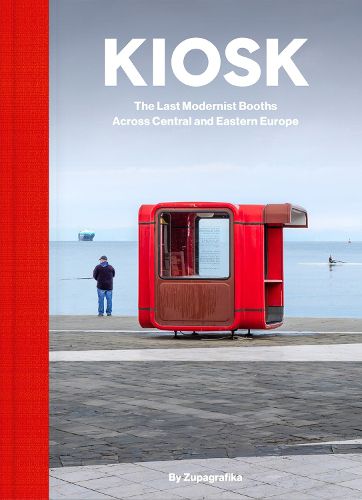Readings Newsletter
Become a Readings Member to make your shopping experience even easier.
Sign in or sign up for free!
You’re not far away from qualifying for FREE standard shipping within Australia
You’ve qualified for FREE standard shipping within Australia
The cart is loading…






Mass-produced from the 1970s to the 1990s, modular kiosks like the seminal K67, designed by the Slovenian architect Sasa J. Machtig, and similar systems, including the Polish Kami, the Macedonian KC190, and the Soviet 'Batyskaf', could be found everywhere from bustling city squares to socialist-era housing estates throughout the former Eastern Bloc and ex-Yugoslavia countries. They served as hot dog and Polish zapiekanka joints, farm egg and rotisserie chicken vendors, funeral flower shops, newsstands, car park booths, currency exchange offices, and more. Containing over 150 captivating photographs featuring more than 100 kiosks from Ljubljana to Warsaw and from Belgrade to Berlin this book provides previously unseen documentation of the remaining modernist booths that witnessed the transformation of Central and Eastern Europe at the end of the 20th century. While some remain active or have undergone refurbishment, others have been abandoned or have slowly faded from the urban landscape. The photographs in this unique collection were taken over the last decade by Zupagrafika's founders, David Navarro and Martyna Sobecka. It is accompanied by an introduction offering invaluable insight into the history of these mobile structures.
$9.00 standard shipping within Australia
FREE standard shipping within Australia for orders over $100.00
Express & International shipping calculated at checkout
Mass-produced from the 1970s to the 1990s, modular kiosks like the seminal K67, designed by the Slovenian architect Sasa J. Machtig, and similar systems, including the Polish Kami, the Macedonian KC190, and the Soviet 'Batyskaf', could be found everywhere from bustling city squares to socialist-era housing estates throughout the former Eastern Bloc and ex-Yugoslavia countries. They served as hot dog and Polish zapiekanka joints, farm egg and rotisserie chicken vendors, funeral flower shops, newsstands, car park booths, currency exchange offices, and more. Containing over 150 captivating photographs featuring more than 100 kiosks from Ljubljana to Warsaw and from Belgrade to Berlin this book provides previously unseen documentation of the remaining modernist booths that witnessed the transformation of Central and Eastern Europe at the end of the 20th century. While some remain active or have undergone refurbishment, others have been abandoned or have slowly faded from the urban landscape. The photographs in this unique collection were taken over the last decade by Zupagrafika's founders, David Navarro and Martyna Sobecka. It is accompanied by an introduction offering invaluable insight into the history of these mobile structures.